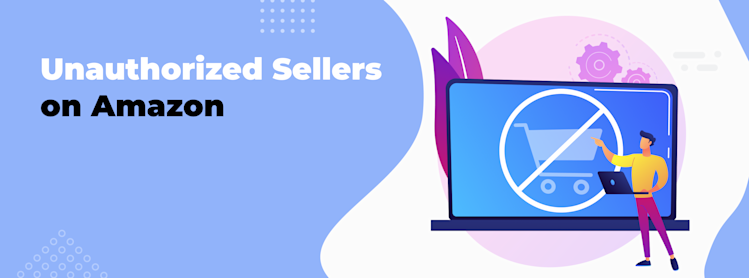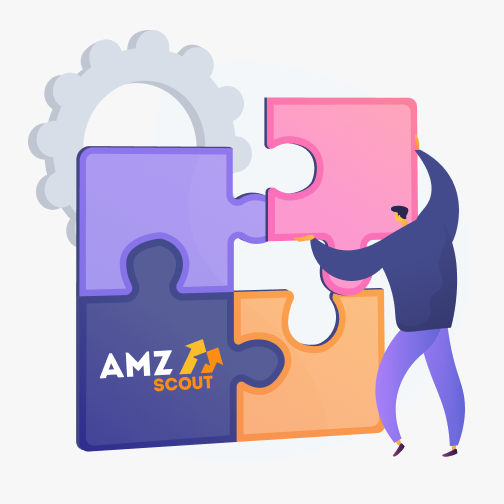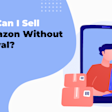
Does Amazon Allow Unauthorized Sellers? A Complete Guide
Imagine discovering your brand’s product being sold by someone else. This not only undermines your brand image but also damages your sales. It’s what happens when unauthorized sellers target your Amazon listings.
In this article, we’ll guide you on how to identify and deal with these sellers to protect your brand on Amazon.
Table of contents
What Are Unauthorized Sellers on Amazon?
Unauthorized sellers on Amazon are individuals or businesses that sell your products without your permission. Unlike counterfeit sellers, who offer fake versions of your items, unauthorized sellers typically sell genuine items but bypass official distribution channels or agreements.
Example: A seller buys your brand's sneakers on sale and then lists them on Amazon at a slightly lower price than you do.
Even though the product is authentic, the seller isn’t authorized by you to sell it—creating potential issues for your business.
Why Unauthorized Sellers Are a Big Problem for Brands
Unauthorized sellers operate outside of your control, leading to a range of issues that can hurt your business performance. Here are the most common problems:
Undercutting prices: These sellers often ignore official pricing policies, selling your products at lower prices than authorized dealers, which undermines your brand value.
Hijacking listings and stealing the Buy Box: Unauthorized sellers can win the Buy Box, taking away visibility and sales from authorized sellers.
Damaging customer experience and brand trust: Unauthorized sellers often lack the insurance or guarantees provided by official dealers or manufacturers, leading to poor customer experiences, as customers won’t receive the support they expect.
Addressing unauthorized sellers is essential to maintaining control over your brand. Below, we’ll discuss how to find out if someone is selling your products without permission.
How to Identify Unauthorized Sellers on Your Listings
There are a few ways to spot unauthorized listings. Here’s a quick overview:
Manual monitoring: Regularly check your product listings on Amazon. Watch for unfamiliar sellers who sell your product.
Review seller feedback: Check customer reviews for any complaints about product quality, delivery issues, or authenticity concerns. These could be signs that some sellers are unauthorized.
Use tools: The AMZScout Wholesale and OA extension helps you track the number of sellers and delivery options on your listings. A sudden increase in sellers or unusual delivery methods may signal unauthorized listings.
While regularly monitoring your listings is important, preventing unauthorized sellers from appearing in the first place is even more critical.
How to Protect Your Brand from Unauthorized Sellers
Brand protection is essential for maintaining a positive image and ensuring long-term success. Here are a few strategies to enhance your brand's protection:
Enroll in Amazon Transparency
Amazon Transparency helps protect your brand by ensuring that only authentic products are shipped to customers. By applying unique codes on your products, Transparency verifies authenticity, reducing the risk of counterfeit items and building trust with your customers.
Enroll in Amazon Brand Registry
Amazon Brand Registry offers a suite of tools designed to protect your brand and intellectual property. Here are the main benefits:
Free access to the Report a Violation tool: Easily report and take action against unauthorized sellers.
Enhanced marketing tools: Use A+ Content to showcase your brand in a more engaging and visually appealing way.
Enforcement support: Enrollment increases your chances of receiving enforcement support from Amazon, helping protect your listings and prevent violations.
To enroll, your brand must be registered—or have a pending registration—with the USPTO (U.S. Patent and Trademark Office), or with the EUIPO (European Union Intellectual Property Office) if your business is based in Europe.
Create and Enforce MAP Policies
Establishing Minimum Advertised Price (MAP) policies helps prevent unauthorized sellers from undercutting your pricing strategy. Enforcing this policy ensures that all authorized sellers adhere to consistent pricing, protecting your brand’s value and customer perception.
Make a List of Authorized Sellers
Keep a list of sellers you allow to sell your products and update it regularly as you make new agreements. This helps you easily spot unauthorized sellers and take action when needed.
Use Amazon FBA
Amazon FBA not only streamlines logistics but also supports brand protection. Each seller’s inventory is assigned a unique FNSKU code, which FBA uses to track and manage products. If another seller tries to list your product, they must use their own FNSKU code. If they attempt to use your product’s FNSKU, it will not link to their inventory, making it easier to spot unauthorized sellers.
While preventing unauthorized sellers is important, if they do appear, don't worry—you can take steps to handle the situation effectively.
How to Remove Unauthorized Sellers from Amazon
Imagine you’ve found a seller on Amazon who isn’t authorized to sell your products. So, how do you deal with them? Follow these three steps:
Step 1: Gather Evidence
Before taking any action, collect proof of the unauthorized activity:
Take screenshots of the listing, including the product page, seller name, pricing, and delivery methods.
Document violations or issues with the product condition (e.g., missing parts).
Check reviews to further support your case for removal.
Once you’ve gathered sufficient evidence, it’s time to proceed with removing the unauthorized seller.
Step 2: Request Removal
Start by contacting the unauthorized seller directly and request that they stop selling your products. A sample message could be:
"Please cease selling this product immediately. Unauthorized sale of our products is a violation of our rights, and we ask you to stop all sales of our products."
Keep in mind that some sellers may not realize they need permission to sell your brand, especially if they are new to Amazon.
However, if the seller refuses to comply or continues selling intentionally, it’s time to contact Amazon for assistance in resolving the issue.
Step 3: File a Complaint with Amazon
If the seller does not comply, it’s time to escalate the issue to Amazon. There are two ways to do this:
If you're enrolled in Brand Registry, use the Report a Violation tool within your account to file a complaint.
If you're not enrolled, contact Amazon Seller Support through the Amazon Seller Central interface and provide all the gathered evidence.
Note: Response times may vary. Amazon typically takes several business days to investigate, but in some cases, it may take a few weeks.
While dealing with unauthorized sellers can be frustrating, it's a common challenge for many brands. By acting quickly and following the right steps, you’ll be able to resolve the issue effectively and maintain control over your listings.
FAQs
What is an unauthorized seller on Amazon?
An unauthorized seller on Amazon is someone who sells your product without your permission. Although they may offer genuine products, they are not authorized to do so, as these products are protected by intellectual property rights. Without your approval, they cannot legally sell your products on the platform.
How do I report unauthorized sellers on Amazon?
You can report unauthorized sellers through Amazon’s Brand Registry if you're enrolled. Simply use the Report a Violation tool within your Brand Registry account. If you're not registered, you can report them by contacting Amazon Seller Support directly and providing details about non authorized offers.
Are there any fake sellers on Amazon?
Yes, there are fake sellers on Amazon. These are typically counterfeit sellers who offer imitation products that claim to be your brand's items. Unlike unauthorized sellers who may sell genuine products without permission, fake sellers sell knockoffs that can mislead customers and damage your brand's reputation.
Does Amazon verify its sellers?
Yes, Amazon verifies its sellers through identity checks, business registration, and other compliance measures. However, some unauthorized and fake sellers can still slip through, making it crucial to monitor your listings and protect your brand.
What is unauthorized activity on Amazon?
Unauthorized activity refers to actions by sellers who are not authorized to sell your products. This can include listing your items without permission, underpricing, or other violations. If you notice such activity, it's important to contact Amazon to protect your brand.
Conclusion
Safeguarding your brand is an ongoing process, but fortunately, there are tools that can make it easier. Consider using AMZScout to identify unauthorized sellers and protect your listings, ensuring a positive customer experience. This way, you’ll minimize risks and improve your chances of running a successful e-commerce business.





